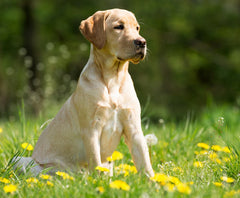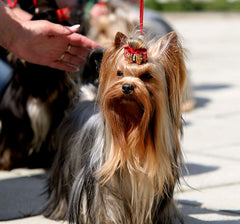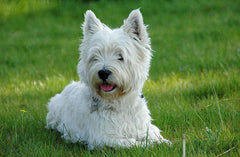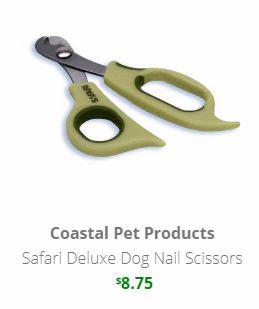
Every animal has different grooming needs. While some dogs need to visit the groomer at least once a month, some are better off with a routine deep brushing at home.
This guide is to help you determine your pet's hair type and how to best care for it. There are so many options when it comes to tools that it is difficult to narrow down what tools are best for your pet.
No matter what kind of coat your dog has, a regular trip to the groomer is a great way to stay on top of keeping their skin and coat in its best form.
Groomers can help with mats, ear cleaning, skin issues, trimming hair as well as nails, and a good groomer will have plenty of pet experience to make the most of your dog's coat.
Leaving any kind of clothing or harness on all of the time can cause extra rubbing against your pet's skin and may cause irritation or matting. If the article has been on your dog for a while, brush or comb them upon its removal.
Types of Brushes
-
Bristle brushes
- appropriate for any coat, bristle brushes come in different forms
- for short hair, look for densely packed, short bristles to give your dog's coat extra shine
- for long hair, look for wider spaced, longer bristles to get all the way through their coat
-
Slicker
- great for mat removal and getting out tangles
- works great with all hair types
-
Pin brushes
- resemble human hairbrushes
- great for smoothing curly, wooly, or long coats
- an everyday maintenance brush
-
Combs
- great for weekly use to get any mats, tangles, and snares out of the hair
- use combs instead of brushes while your dog is wet in order to avoid hair breakage
Smooth Coats

Smooth-coated breeds have hair that is close to the body (around 1 inch or less). Short-haired dogs are some of the easier dogs to groom because of the silky nature of the coat and the length. These dogs have a top coat and an undercoat and shed both throughout the year to control their body temperatures.
Common examples of these types of coats include:
- Bully breeds
- Greyhounds
- Labrador Retrievers
- Border Collies
- Golden Retrievers
A regular brushing with a pin/bristle brush or rubber curry comb will help keep mats out of your dog's hair and spread their skin oils evenly throughout their coat. Curry combs have the added bonus of collecting ready-to-shed hair.
Self-cleaning slicker brushes have a button so you can easily push the hair off of the bristles, making them a great option for getting rid of all of that hair collecting in the brush without wasting precious grooming minutes.
This kind of coat is prone to shedding. Check out our guide to de-shedding your pet for tips and tricks on how to get that pesky pet hair out of your house and off your clothes.
Long Coats

Just like human hair, the longer it is the more maintenance it requires.
Some breeds are known for their floor dusting do's, but keeping them in shape can be a challenge that daily grooming can help conquer.
Unkempt coats are not only unsightly, they can be painful and medically unsafe. The top coat may look smooth, but mats constantly lurk underneath the top surface and can cause the skin to become raw and infected quickly.
Long-coated breeds include:
- Afghan Hounds
- Lhasa Apsos
- Old English Sheepdogs
- Shih Tzus
- Maltese
- Yorkshire Terriers
Brushing with pin brushes, slicker brushes, and regular combing to keep mats at bay will help keep your long-haired dog healthy and sleek.
For non-show dogs, many owners opt for a shorter cut to keep their hair at a more manageable "bob" or "teddy bear" style. Long hair can tangle during playtime, sleep, and even while they walk. Once a mat forms, it can be difficult to brush out. De-matting tools can be painful if used incorrectly, so practice caution and ask your groomer to shave the mat off if need be.
Regular trimming around the eyes, ears, and pubic or "sanitary" areas will help your pet see clearly and keep messes to a minimum. Use scissors specifically designed to cut hair to help eliminate the risk of injury, or when in doubt: have a professional take care of it.
Single Coats

Some dog breeds do not have an undercoat, but instead have a single wiry coat of hair that feels different from the typical smooth hair of most dogs (often referred to as "wire coats").
Typical wire hair breeds include:
- Jack Russell Terriers
- Irish Terriers
- Brussels Griffons
- Schnauzers
- West Highland White Terriers (A.K.A. "Westies")
- Norwich Terriers
Wirehair does not shed so these dogs rely on their owners to take proper care of their coats and pluck out old, dead hairs to encourage new hair to grow. This job is often best left to an experienced groomer who knows what to look for.
Use a pin brush to help stimulate hair growth. Curry combs are another great option because the rubber teeth will not snag or tug on their hair. De-shedders do not work on single-coat dogs and may hurt the pet if used.
Double Coats

Double coats require more maintenance to cut down on shedding. They grow their second layer in order to insulate their bodies, ideally to keep them warm or cool in the extreme weather their ancestors faced.
Dog breeds such as:
- Akita's
- Australian Shepherds
- German Shepards
- Belgian Malinois
- Chow Chows
- Pomeranians
- Newfoundlands
Due to the nature of the coat, regular de-shedding is important to keep your dog from overheating--especially in the summer! Signs of overheating include panting, drooling, or seeking out a cool surface to lay on.
Mats in this type of coat can cause irritation if there is any trapped moisture next to the skin. this moisture can cause your pet to "stink" but it can also lead to hot spots, bacterial, or fungal infections.
What About Shaving?
By shaving a dog's undercoat you remove their protective barrier from the elements. While we think of coats as the thing that keeps them warm, it also protects from sunburn and regulates their body temperature. (Remember, dogs do not sweat!)
In extreme cases, it can cause "post-clip alopecia," where your dog's coat does not grow back the way it once was - or ever grow back.
Bath time

Shampooing your dog should be done sparingly. Dogs have an oil system all over their bodies that keep their hair hydrated, each shampooing strips the coat of those natural oils and, if done too frequently, can dry out your dog's coat.
If you use a topical flea medication, do not shampoo at least three days before or after application. The topical treatments spread through the oil system. Soap will also wash away treatments, so make sure your shampoo is soap-free!
Puppies rarely need to be washed. If necessary, be sure to use a designated puppy shampoo as these are formulated specifically for their sensitive skin.
Using a rubber curry comb during bath time can help you get the most out of your pet's bath by pushing the product deeper into their hair.
Cats do not need to be shampooed. The majority of them do not like water and will be traumatized by a bath. They are very clean animals and self-groom constantly. A regular brushing and occasional de-shedding is all they need to keep themselves clean.
If you must bathe your cat, try using a damp washcloth and always wash in the direction of their hair.
Nail Trims

Keeping nails trim is an important aspect of being a pet parent. Overgrown nails can be sharp, scratching floors or furniture, and can be painful for your pet.
Standard squeezable clippers are most people's go-to when it comes to nail trimmers. The "guillotine" style can be hard to manage and often causes more cut than necessary on the nail. Once you get your favorite style of trimmer, it's time to get clipping!
Introduce the nail trimmers to your pet. Let them smell them and be near them without using them for a few days. This way they will become used to having them around and will not panic as soon as the clippers appear.
Start slowly, one nail at a time. Post-trim, reward your pet with lots of treats and praise. Start slowly and stop with any sign of discomfort. Forcing them to stay still can cause problems later on.
If you have an unruly pet, ask your vet or groomer to trim their nails for you. Bring your nail clippers to have them show you how to use them.
Nervous about cutting the "quick"? The quick is a blood-filled vein that resides within the nail.
The quick can grow all the way to the tip when nails are left untrimmed. If there has been a long gap, trim a tiny bit and repeat after a week. The quick will recede slowly but surely.
Try trimming right after bath time when your pet's nails will be soft and somewhat translucent, allowing you to see the quick more easily. Rubbing oil (such as coconut) on the nail can also reveal the quick.
When trimming, have styptic powders on hand in case you mistakenly cut too short.
Drop by our store to get everything you need to keep your pet's fur pristine!




